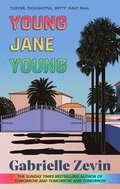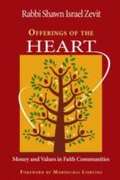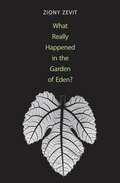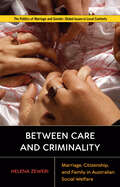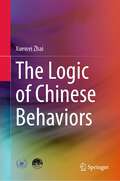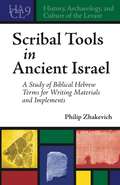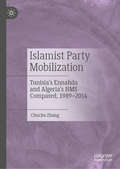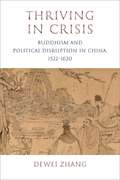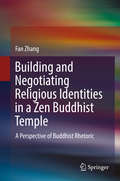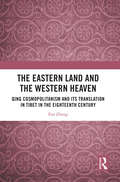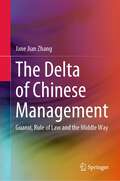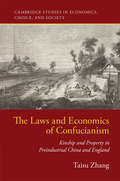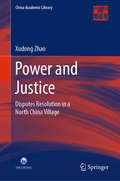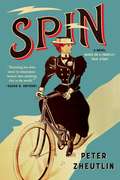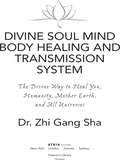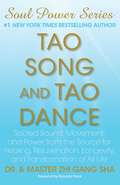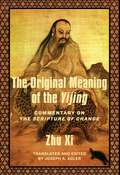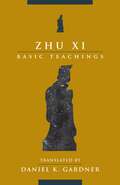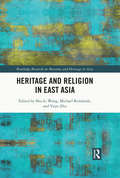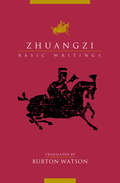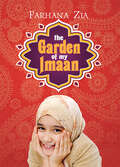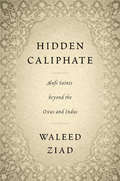- Table View
- List View
Young Jane Young
by Gabrielle ZevinBy the author of international bestseller The Storied Life of A.J. Fikry.Aviva Grossman, an ambitious intern in Florida working for a politician, makes the life-changing mistake of having an affair with her boss - who is beloved, admired, successful, and very married - and blogging about it. When the affair comes to light, Aviva takes the fall. She is slut-shamed, labelled as fat and ugly, and considered a blight on politics in general.Aviva sees no way out but to change her name and move to a remote town in Maine. She starts over as Jane the wedding planner, tries to be smarter about her life, and to raise her daughter to be strong and confident. But when, at the urging of others, Jane decides to run for public office herself, that long-ago mistake trails her via the Internet like a scarlet A. These days, the past is never, ever, truly past, everything you've done lives on in the digital world for everyone to know about for all eternity. And it's only a matter of time until Ruby finds out...Young Jane Young is a funny, serious and moving novel about the myriad ways in which roles are circumscribed for women, whether they are young and ambitious interns; mothers attempting to steer their daughters through a male-dominated world; political wives facing an age-old knowledge that fidelity isn't always honoured; or young girls feeling bold about their many choices before they realize the gender restrictions all around them. Gabrielle Zevin captures the double standards alive and well in every aspect of life for women.
Young Jane Young: by the Sunday Times bestselling author of Tomorrow, and Tomorrow, and Tomorrow
by Gabrielle Zevin'This sly, exhilarating novel takes on slut-shaming . . . and manages to be hilarious in the process' People'It's brilliant and hilarious . . . It has a heart. And a spine. It's exactly what we need more of right now.' Chicago Tribune'A smart, intersectional feminist tour de force' Washington TimesThis is the story of five women . . . Meet Rachel Grossman. She'll stop at nothing to protect her daughter, Aviva, even if it ends up costing her everything. Meet Jane Young. She's disrupting a quiet life with her daughter, Ruby, to seek political office for the first time. Meet Ruby Young. She thinks her mom has a secret. She's right. Meet Embeth Levin. She has made a career of cleaning up her congressman husband's messes. Meet Aviva Grossman. The Internet won't let her or anyone else forget her past transgressions. This is the story of five women...and the scandal that binds them together. From Gabrielle Zevin, the bestselling author of Tomorrow, and Tomorrow, and Tomorrow, comes another story with unforgettable characters that is particularly suited to the times we live in now.
Offerings of the Heart: Money and Values in Faith Communities
by Shawn Israel ZevitNadiv Lev. “Offerings of the Heart.” This phrase sets the tone for the Jewish spiritual perspective that money is a tool for actualizing God’s presence in the world. Building on this core value and setting aside the financial/spiritual split with which many congregational leaders operate, Rabbi Shawn Zevit brings the depth and breadth of Jewish teachings on money and the spiritual life to all faith communities. This book provides texts and tools to help clergy, staff, and lay leaders of congregations of any faith approach financial and other resources as core means to build and maintain whole and holy lives in a communal setting. Zevit demonstrates how faith communities can create values-based approaches to developing and managing financial and human resources that are rooted in the very sacred traditions, principles, and impulses that bring us together. "Rabbi Shawn Zevit has gathered much of the wisdom of the Jewish community learned through four millennia of life with God. He shows us the rich thought and experience Hebrew scriptures and traditions contribute for all who seek to be faithful in the use of money in their communities. A deep understanding of generosity and giving is brought to bear on the practicalities of budgets, planning, and reaching out in deeds of justice and mercy." -- Loren B. Mead, founding president, The Alban Institute
What Really Happened in the Garden of Eden?
by Ziony ZevitA provocative new interpretation of the Adam and Eve story from an expert in Biblical literature.The Garden of Eden story, one of the most famous narratives in Western history, is typically read as an ancient account of original sin and humanity&’s fall from divine grace. In this highly innovative study, Ziony Zevit argues that this is not how ancient Israelites understood the early biblical text. Drawing on such diverse disciplines as biblical studies, geography, archaeology, mythology, anthropology, biology, poetics, law, linguistics, and literary theory, he clarifies the worldview of the ancient Israelite readers during the First Temple period and elucidates what the story likely meant in its original context.Most provocatively, he contends that our ideas about original sin are based upon misconceptions originating in the Second Temple period under the influence of Hellenism. He shows how, for ancient Israelites, the story was really about how humans achieved ethical discernment. He argues further that Adam was not made from dust and that Eve was not made from Adam&’s rib. His study unsettles much of what has been taken for granted about the story for more than two millennia—and has far-reaching implications for both literary and theological interpreters.&“Classical Hebrew in the hands of Ziony Zevit is like a cello in the hands of a master cellist. He knows all the hidden subtleties of the instrument, and he makes you hear them in this rendition of the profoundly simple story of Adam, Eve, the Serpent, and their Creator in the Garden of Eden. Zevit brings a great deal of other biblical learning to bear in a surprisingly light-hearted book.&”―Jack Miles, author of God: A Biography
Between Care and Criminality: Marriage, Citizenship, and Family in Australian Social Welfare (Politics of Marriage and Gender: Global Issues in Local Contexts)
by Helena ZeweriBetween Care and Criminality examines social welfare’s encounter with migration and marriage in a period of intensified border control in Melbourne, Australia. It offers an in-depth ethnographic account of the effort to prevent forced marriage in the aftermath of a 2013 law that criminalized the practice. Disproportionately targeted toward Muslim migrant communities, prevention efforts were tasked with making the family relations and marital practices of migrants objects of policy knowledge in the name of care and community empowerment. Through tracing the everyday ways that direct service providers, police, and advocates learned to identify imminent marriages and at-risk individuals, this book reveals how the domain of social welfare becomes the new frontier where the settler colonial state judges good citizenship. In doing so, it invites social welfare to reflect on how migrant conceptions of familial care, personhood, and mutual obligation become structured by the violence of displacement, borders, and conditional citizenship.
The Logic of Chinese Behaviors
by Xuewei ZhaiThis book presents a discussion on Chinese people’s internal and external psychologies and logics, as well as the respective stage of social development and cultural context they were raised in, and from sociological, social psychological, and cultural anthropological perspectives. In particular, the book explores the relationship between Chinese people’s behaviors and China’s social and cultural structure. It puts forward a theoretical framework for the analysis of Chinese social behaviors, which is based on the realistic aspects of Chinese people’s day-to-day-lives. The book also concludes that any attempt to study Chinese psychologies and behaviors should “seek the constant among the changes, or at least those aspects that are hardest to change” and investigate the context and background, which can provide a point of departure for current and future research.
Scribal Tools in Ancient Israel: A Study of Biblical Hebrew Terms for Writing Materials and Implements (History, Archaeology, and Culture of the Levant #9)
by Philip ZhakevichIn this book, Philip Zhakevich examines the technology of writing as it existed in the southern Levant during the Iron Age II period, after the alphabetic writing system had fully taken root in the region. Using the Hebrew Bible as its corpus and focusing on a set of Hebrew terms that designated writing surfaces and instruments, this study synthesizes the semantic data of the Bible with the archeological and art-historical evidence for writing in ancient Israel. The bulk of this work comprises an in-depth lexicographical analysis of Biblical Hebrew terms related to Israel’s writing technology. Employing comparative Semitics, lexical semantics, and archaeology, Zhakevich provides a thorough analysis of the origins of the relevant terms; their use in the biblical text, Ben Sira, the Dead Sea Scrolls, and ancient Hebrew inscriptions; and their translation in the Septuagint and other ancient versions. The final chapter evaluates Israel’s writing practices in light of those of the ancient world, concluding that Israel’s most common form of writing (i.e., writing with ink on ostraca and papyrus) is Egyptian in origin and was introduced into Canaan during the New Kingdom.Comprehensive and original in its scope, Scribal Tools in Ancient Israel is a landmark contribution to our knowledge of scribes and scribal practices in ancient Israel. Students and scholars interested in language and literacy in the first-millennium Levant in particular will profit from this volume.
Scribal Tools in Ancient Israel: A Study of Biblical Hebrew Terms for Writing Materials and Implements (History, Archaeology, and Culture of the Levant)
by Philip ZhakevichIn this book, Philip Zhakevich examines the technology of writing as it existed in the southern Levant during the Iron Age II period, after the alphabetic writing system had fully taken root in the region. Using the Hebrew Bible as its corpus and focusing on a set of Hebrew terms that designated writing surfaces and instruments, this study synthesizes the semantic data of the Bible with the archeological and art-historical evidence for writing in ancient Israel. The bulk of this work comprises an in-depth lexicographical analysis of Biblical Hebrew terms related to Israel’s writing technology. Employing comparative Semitics, lexical semantics, and archaeology, Zhakevich provides a thorough analysis of the origins of the relevant terms; their use in the biblical text, Ben Sira, the Dead Sea Scrolls, and ancient Hebrew inscriptions; and their translation in the Septuagint and other ancient versions. The final chapter evaluates Israel’s writing practices in light of those of the ancient world, concluding that Israel’s most common form of writing (i.e., writing with ink on ostraca and papyrus) is Egyptian in origin and was introduced into Canaan during the New Kingdom.Comprehensive and original in its scope, Scribal Tools in Ancient Israel is a landmark contribution to our knowledge of scribes and scribal practices in ancient Israel. Students and scholars interested in language and literacy in the first-millennium Levant in particular will profit from this volume.
Islamist Party Mobilization: Tunisia’s Ennahda and Algeria’s HMS Compared, 1989–2014
by Chuchu ZhangThis book aims to explore how Islamist parties mobilize debates, discourses, and environments in electoral authoritarian systems. Interrelating three theoretical schools, Electoral Authoritarianism Theory, Protest Voting Theory, and Political Process Theory, it adopts and expands on a demand-and-supply framework to approach the subject in a novel way, and adapts them to address North Africa, a region in which such theoretical scholarship has until now not been conducted. In-depth case studies focus on two Islamist parties in North Africa, Tunisia’s Ennahda and Algeria’s HMS, both of which adopted the Muslim Brotherhood model, had charismatic leaders, and were active in the political scene from 1989-2014, the period between their first electoral trial and their electoral participation after taking part in governance. The chapters proceed chronologically, providing a historical treatment of the evolution of Ennahda and the HMS since their inception and addressing their development in two and a half decades.
Thriving in Crisis: Buddhism and Political Disruption in China, 1522–1620 (The Sheng Yen Series in Chinese Buddhist Studies)
by Dewei ZhangLate imperial Chinese Buddhism was long dismissed as having declined from the glories of Buddhism during the Sui and Tang dynasties (581–907). In recent scholarship, a more nuanced picture of late Ming-era Buddhist renewal has emerged. Yet this alternate conception of the history of Buddhism in China has tended to focus on either doctrinal contributions of individual masters or the roles of local elites in Jiangnan, leaving unsolved broader questions regarding the dynamics and mechanism behind the evolution of Buddhism into the renewal.Thriving in Crisis is a systematic study of the late Ming Buddhist renewal with a focus on the religious and political factors that enabled it to happen. Dewei Zhang explores the history of the boom in enthusiasm for Buddhism in the Jiajing-Wanli era (1522–1620), tracing a pattern of advances and retrenchment at different social levels in varied regions. He reveals that the Buddhist renewal was a dynamic movement that engaged a wide swath of elites, from emperors and empress dowagers to eunuchs and scholar-officials. Drawing on a range of evidence and approaches, Zhang contends that the late Ming renewal was a politically driven exception to a longer-term current of disfavor toward Buddhism and that it failed to establish Buddhism on a foundation solid enough for its future development. A groundbreaking interdisciplinary study, Thriving in Crisis provides a new theoretical framework for understanding the patterns of Buddhist history in China.
Building and Negotiating Religious Identities in a Zen Buddhist Temple: A Perspective of Buddhist Rhetoric
by Fan ZhangThis book explores the practices in a Zen Buddhist temple located in Northwest Ohio against the backdrop of globalization. Drawing on the previous studies on Buddhist modernization and westernization, it provides a better understanding of the westernization of Buddhism and its adapted practices and rituals in the host culture. Using rhetorical criticism methodology, the author approaches this temple as an embodiment of Buddhist rhetoric with both discursive and non-discursive expressions within the discourses of modernity. By analyzing the rhetorical practices at the temple through abbots’ teaching videos, the temple website, members’ dharma names, and the materiality of the temple space and artifacts, the author discovers how Buddhist rhetoric functions to constitute and negotiate the religious identities of the community members through its various rituals and activities. At the same time, the author examines how the temple’s space and settings facilitate the collective the formation and preservation of the Buddhist identity. Through a nuanced discussion of Buddhist rhetoric, this book illuminates a new rhetorical methodology to understand religious identity construction. Furthermore, it offers deeper insights into the future development of modern Buddhism, which are also applicable to Buddhist practitioners and other major world religions.
The Eastern Land and the Western Heaven: Qing Cosmopolitanism and its Translation in Tibet in the Eighteenth Century
by Fan ZhangThis book sheds light on the structure of “a unity with diversity” developed in the Qing imperial formation (1636–1912) by a case study of the Qing-Tibetan encounters in the eighteenth century. By analyzing historical and ethnographical materials, the book investigates the translation of Chinese histories and stone inscriptions into Tibetan, the transformation of the landscapes at Mount Wutai and Lhasa, and the transplantation of Chinese deities and medical practices to Tibet. It demonstrates the processes in which the cosmopolitan interlocutors reified imperial integrity while expressing their diverse longings and belongings. It concludes that the Qing’s rule over its cultural others was neither simply Sinicizing nor colonizing, but a translational process in which multivocalic actors shared narratives, landscapes, and practices, while the emperor and tantric masters performed cosmic power over humans and metahumans. This book cuts across the fields of anthropology, history, Chinese Studies, and Tibetan Studies. It reflects on the concepts of sovereignty and ethnicity, and it also extends the methodological horizon of historical anthropology.
The Delta of Chinese Management: Guanxi, Rule of Law and the Middle Way
by Jane Jian ZhangThis book explores the differential mode of people management in the Chinese context. Based on years of ethnographic research, this book illustrates how and why the guanxihu phenomena exist across different organisations and thus, the guanxi-hu could break the ‘organisational laws’ (e.g. structure and system; rules and regulations; policies and procedures). By focusing on personnel practices within organisations, the book provides an outlook for keeping indigenous management with Chinese characteristics. Most importantly, this book offers significant insights into how to ‘manage people’ in the private and public sectors within the Chinese cultural and institutional environment. The delta of Chinese management will appeal not only to academics and researchers who have an interest in management and Chinese studies, but also to expatriates and practitioners who are engaged in doing business and managing people with/in China.
Cambridge Studies in Economics, Choice, and Society: Kinship and Property in Preindustrial China and England (Cambridge Studies in Economics, Choice, and Society)
by Taisu ZhangTying together cultural history, legal history, and institutional economics, The Laws and Economics of Confucianism: Kinship and Property in Pre-Industrial China and England offers a novel argument as to why Chinese and English pre-industrial economic development went down different paths. The dominance of Neo-Confucian social hierarchies in Late Imperial and Republican China, under which advanced age and generational seniority were the primary determinants of sociopolitical status, allowed many poor but senior individuals to possess status and political authority highly disproportionate to their wealth. In comparison, landed wealth was a fairly strict prerequisite for high status and authority in the far more 'individualist' society of early modern England, essentially excluding low-income individuals from secular positions of prestige and leadership. Zhang argues that this social difference had major consequences for property institutions and agricultural production.
Power and Justice: Disputes Resolution in a North China Village (China Academic Library)
by Xudong ZhaoThis book discusses the relationship, interaction and conflict between everyday life and various institutions in a specific village in North China, with a focus on the formal and informal legal systems. It vividly describes the village’s “legal construction problems” as well as the customs and laws, and such it can be seen as a historical and innovative comment on China’s problems. The book is based on the author’s field investigations assessing vast amounts of material concerning local organizations, formal and informal authorities, economic exchange, religious rituals, as well as interviews with villagers and numerous court files. It presents an in-depth exploration of “pluralism of authority” in China’s rural society, and examines how various authorities were formed. It also summarizes how various local disputes are resolved and discusses the villagers’ understanding of the concept of “justice.” Lastly, it suggests ways in which national law and local customs could communicate and collaborate.
Spin: A Novel Based on a (Mostly) True Story
by Peter ZheutlinRide away on a 'round-the-world adventure of a lifetime—with only a change of clothes and a pearl-handled revolver—in this trascendent novel inspired by the life of Annie Londonderry.&“Bicycling has done more to emancipate women than anything else in the world.&”—Susan B. Anthony Who was Annie Londonderry? She captured the popular imagination with her daring &‘round the world trip on two wheels. It was, declared The New York World in October of 1895, &“the most extraordinary journey ever undertaken by a woman.&” But beyond the headlines, Londonderry was really Annie Cohen Kopchovsky, a young, Jewish mother of three small children, who climbed onto a 42-pound Columbia bicycle and pedaled away into history. Reportedly set in motion by a wager between two wealthy Boston merchants, the bet required Annie not only to circle the earth by bicycle in 15 months, but to earn $5,000 en route, as well. This was no mere test of a woman&’s physical endurance and mental fortitude; it was a test of a woman&’s ability to fend for herself in the world. Often attired in a man&’s riding suit, Annie turned every Victorian notion of female propriety on its head. Not only did she abandon, temporarily, her role of wife and mother (scandalous in the 1890s), she earned her way selling photographs of herself, appearing as an attraction in stores, and by turning herself into a mobile billboard. Zheutlin, a descendent of Annie, brilliantly probes the inner life and seeming boundless courage of this outlandish, brash, and charismatic woman. In a time when women could not vote and few worked outside the home, Annie was a master of public relations, a consummate self-promoter, and a skillful creator of her own myth. Yet, for more than a century her remarkable story was lost to history. In SPIN, this remarkable heroine and her marvelous, stranger-than-fiction story is vividly brought to life for a new generation.
Divine Soul Mind Body Healing and Transmission Sys
by Zhi Gang Sha Dr.Heal the soul first; then healing of the mind and body will follow.Dr. Sha's #1 New York Times bestselling Soul Power Series has benefited hundreds of thousands of people worldwide. Now, he shares the soul secrets, wisdom, knowledge, and practical techniques of the divine soul healing system. In this remarkable and uplifting guide to physical health, emotional wellness, and spiritual fulfillment, Dr. Sha reveals practical techniques to heal you, your loved ones, pets, relationships, finances, organizations, Mother Earth, and humanity.This divine soul healing system will teach you how to:* Remove soul, mind, and body blockages.* Receive Divine Soul Mind Body Transplants.* Invoke and practice with Divine Soul Mind Body Transplants.In addition, Dr. Sha shares deep secrets of traditional Chinese medicine and ancient philosophies and offers step-by-step exercises and easy tips for healing and rejuvenation. This book offers you the most powerful soul healing available at this time; it is truly a breakthrough divine gift and treasure for humanity.
Tao Song and Tao Dance: Sacred Sound, Movement, and Power from the Source for Healing, Rejuvenation, Longevity, and Transformation of All Life
by Zhi Gang Sha Dr.New York Times bestselling author Master Zhi Gang Sha reveals the significance and power of Tao Song, the highest and most profound Soul Song that can transform every aspect of life, and Tao Dance, movement guided by the Source.Tao is the Source and Creator. Tao is The Way of all life. Tao is the universal principles and laws. Tao Song is sound from the Source. Tao Dance is movement from the Source. Tao Song and Tao Dance carry Tao power and ability from the Source. In the ninth book of his revolutionary Soul Power Series, and his third book on Tao, Master Sha reveals new sacred Tao Song mantras that carry Tao frequency and vibration, which can transform the frequency and vibration of all life. Sacred Tao Song mantras and Tao Dance carry Tao love, which melts all blockages; Tao forgiveness, which brings inner joy and inner peace; Tao compassion, which boosts energy, stamina, vitality, and immunity; and Tao light, which heals, prevents sickness, purifies and rejuvenates soul, heart, mind, and body, and transforms relationships, finances, and every aspect of life. Tao Oneness Practice is created and released. Step into the Tao with Master Sha.
The Original Meaning of the Yijing: Commentary on the Scripture of Change (Translations from the Asian Classics)
by Xi ZhuThe Yijing (I Ching), or Scripture of Change, is traditionally considered the first and most profound of the Chinese classics. Originally a divination manual based on trigrams and hexagrams, by the beginning of the first millennium it had acquired written explanations and a series of appendices attributed to Confucius, which transformed it into a work of wisdom literature as well as divination. Over the centuries, hundreds of commentaries were written on it, but for the past thousand years, one of the most influential has been that of Zhu Xi (1130–1200), who synthesized the major interpretive approaches to the text and integrated it into his system of moral self-cultivation.Joseph A. Adler’s translation of the Yijing includes for the first time in English Zhu Xi’s commentary in full. Adler explores Zhu Xi’s interpretation of the text and situates it in the context of his overall theoretical system. Zhu Xi held that the Yijing was originally composed for the purpose of divination by the mythic sage Fuxi, who intended to create a system to aid decision making. The text’s meaning, therefore, could not be captured by a single commentator; it would emerge for each person through the process of divination. This translation makes available to the English-language audience a crucial text in the history of Chinese religion and philosophy, with an introduction and translator’s notes that explain its intellectual and historical context.
Zhu Xi: Basic Teachings
by Xi ZhuZhu Xi (1130–1200) was the preeminent Confucian thinker of the Song dynasty (960–1279). His teachings profoundly influenced China, where for centuries after his death they formed the basis of the country’s educational system. In Korea, Japan, and Vietnam as well, elites embraced his inspired and authoritative synthesis of Confucian thought.In Zhu’s eyes, the great Way of China was in decline, with its very survival threatened by external enemies and internal moral weakness. In his writings and teaching, Zhu took as his mission the revival of the Confucian tradition, the source of China’s greatness, and its transmission to future generations. For him, restoring Confucianism to its rightful place required drawing on the tradition’s whole sweep, from the sacred texts of the sages and worthies of antiquity to the more recent writings of the great thinkers of the tenth and eleventh centuries.This book presents the essential teachings of the new Confucian (“Neo-Confucian”) philosophical system that Zhu Xi forged, providing a concise introduction to one of the most important figures in the history of Chinese thought. It offers selections from the Classified Conversations of Master Zhu (Zhuzi yulei), a lengthy collection of Zhu’s conversations with disciples. In these texts, Zhu Xi reflects on the Confucian teachings of the past, revising and refining his understanding of them and shaping that understanding into a cohesive system of thought. Daniel K. Gardner’s translation renders these discussions and sayings in a conversational style that is accessible to new and more advanced readers alike.
Heritage and Religion in East Asia (Routledge Research on Museums and Heritage in Asia)
by Yujie Zhu Michael Rowlands Shu-Li WangHeritage and Religion in East Asia examines how religious heritage, in a mobile way, plays across national boundaries in East Asia and, in doing so, the book provides new theoretical insights into the articulation of heritage and religion. Drawing on primary, comparative research carried out in four East Asian countries, much of which was undertaken by East Asian scholars, the book shows how the inscription of religious items as "Heritage" has stimulated cross-border interactions among religious practitioners and boosted tourism along modern pilgrimage routes. Considering how these forces encourage cross-border links in heritage practices and religious movements in China, Taiwan, South Korea, and Japan, the volume also questions what role heritage plays in a region where Buddhism, Taoism, and other various folk religious practices are dominant. Arguing that it is diversity and vibrancy that makes religious discourse in East Asia unique, the contributors explore how this particularity both energizes and is empowered by heritage practices in East Asia. Heritage and Religion in East Asia enriches understanding of the impact of heritage and religious culture in modern society and will be of interest to academics and students working in heritage studies, anthropology, religion, and East Asian studies.
Zhuangzi: Basic Writings (Translations from the Asian Classics)
by ZhuangziOnly by inhabiting Dao (the Way of Nature) and dwelling in its unity can humankind achieve true happiness and freedom, in both life and death. This is Daoist philosophy's central tenet, espoused by the person—or group of people—known as Zhuangzi (369?–286? BCE) in a text by the same name. To be free, individuals must discard rigid distinctions between right and wrong, and follow a course of action not motivated by gain or striving. When one ceases to judge events as good or bad, man-made suffering disappears, and natural suffering is embraced as part of life.Zhuangzi elucidates this mystical philosophy through humor, parable, and anecdote, using non sequitur and even nonsense to illuminate truths beyond the boundaries of ordinary logic. Boldly imaginative and inventively written, the Zhuangzi floats free of its historical period and society, addressing the spiritual nourishment of all people across time. One of the most justly celebrated texts of the Chinese tradition, the Zhuangzi is read by thousands of English-language scholars each year, yet, until now, only in the Wade-Giles romanization. Burton Watson's conversion to pinyin in this book brings the text in line with how Chinese scholars, and an increasing number of other scholars, read it.
Chuang Tzŭ: Taoist Philosopher and Chinese Mystic
by Zhuang Zi Herbert A. GilesChuang Tzŭ belongs to a period three or four centuries before Christ. A disciple of Lao Tzŭ, his writings, which as a consequence are mostly allegorical, are an attempt to refute the materialistic Confucian teaching that arose after Lao Tzŭ's death. Although Chuang Tzŭ failed in his aims, he left a work of marvellous literary beauty and great originality. This classic translation makes Chuang Tzŭ available to English readers with the aid of a running commentary incorporated in the body of the text.
The Garden of My Imaan
by Farhana ZiaIt's hard enough to fit in without also having to decide whether to fast for Ramadan or wear the hijab.Aliya already struggles with trying to fit in, feeling confident enough to talk to the cute boy or brave enough to stand up to mean kids—the fact that she's Muslim is just another part of her life. But then Marwa, a Moroccan girl who shares Aliya's faith if not her culture, moves to town. Marwa's quiet confidence leads Aliya to wonder even more about who she is, what she believes, and where she fits in. In a series of letters to Allah she writes for a Sunday school project, Aliya explores her dreams and fears, hoping that with hard work and faith, something beautiful will grow in the garden of imaan—the small quiet place inside where belief unfolds, one petal at a time.This award-winning novel from author and educator Farhana Zia captures the social and identity struggles of middle school with a fresh, new voice.
Hidden Caliphate: Sufi Saints beyond the Oxus and Indus
by Waleed ZiadSufis created the most extensive Muslim revivalist network in Asia before the twentieth century, generating a vibrant Persianate literary, intellectual, and spiritual culture while tying together a politically fractured world. In a pathbreaking work combining social history, religious studies, and anthropology, Waleed Ziad examines the development across Asia of Muslim revivalist networks from the eighteenth to the twentieth centuries. At the center of the story are the Naqshbandi-Mujaddidi Sufis, who inspired major reformist movements and articulated effective social responses to the fracturing of Muslim political power amid European colonialism. In a time of political upheaval, the Mujaddidis fused Persian, Arabic, Turkic, and Indic literary traditions, mystical virtuosity, popular religious practices, and urban scholasticism in a unified yet flexible expression of Islam. The Mujaddidi “Hidden Caliphate,” as it was known, brought cohesion to diverse Muslim communities from Delhi through Peshawar to the steppes of Central Asia. And the legacy of Mujaddidi Sufis continues to shape the Muslim world, as their institutional structures, pedagogies, and critiques have worked their way into leading social movements from Turkey to Indonesia, and among the Muslims of China. By shifting attention away from court politics, colonial actors, and the standard narrative of the “Great Game,” Ziad offers a new vision of Islamic sovereignty. At the same time, he demonstrates the pivotal place of the Afghan Empire in sustaining this vast inter-Asian web of scholastic and economic exchange. Based on extensive fieldwork across Afghanistan, Uzbekistan, and Pakistan at madrasas, Sufi monasteries, private libraries, and archives, Hidden Caliphate reveals the long-term influence of Mujaddidi reform and revival in the eastern Muslim world, bringing together seemingly disparate social, political, and intellectual currents from the Indian Ocean to Siberia.
